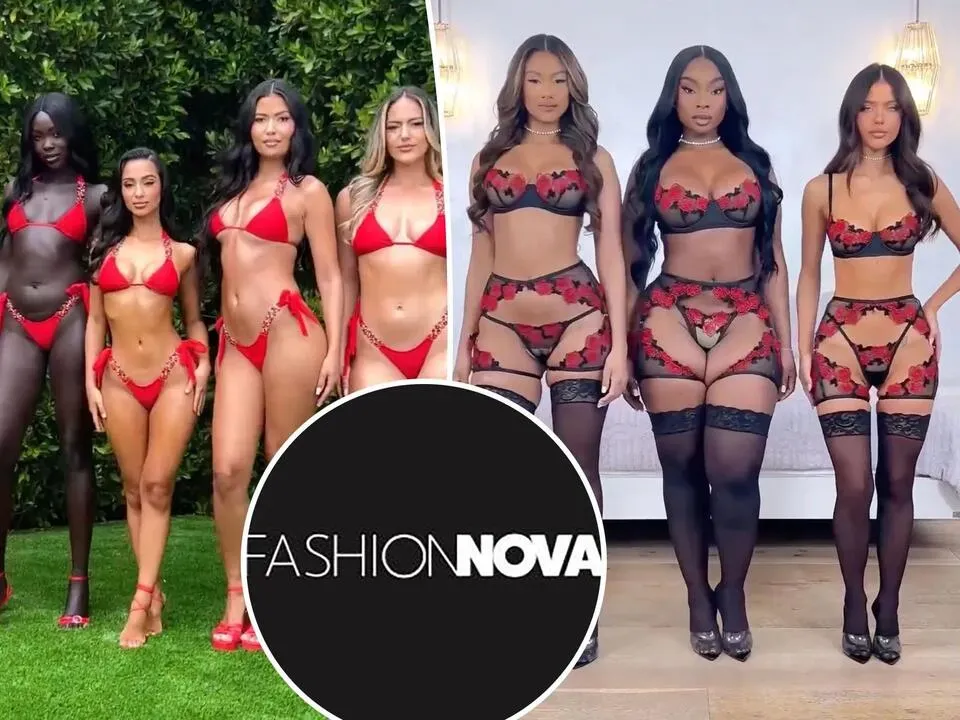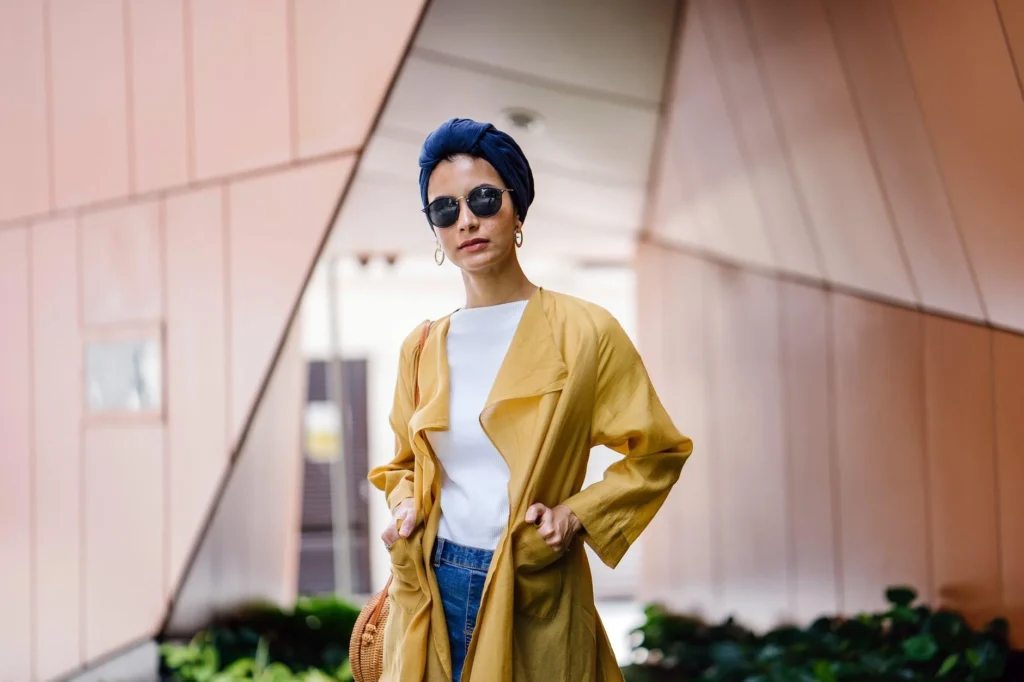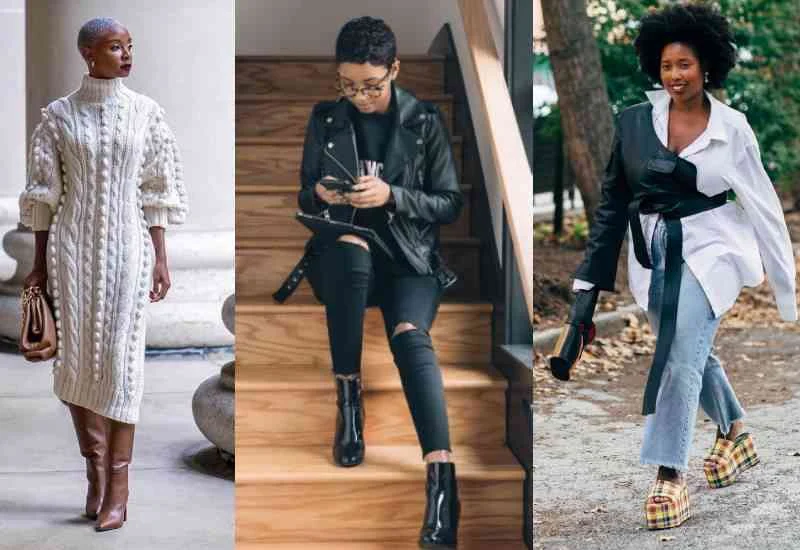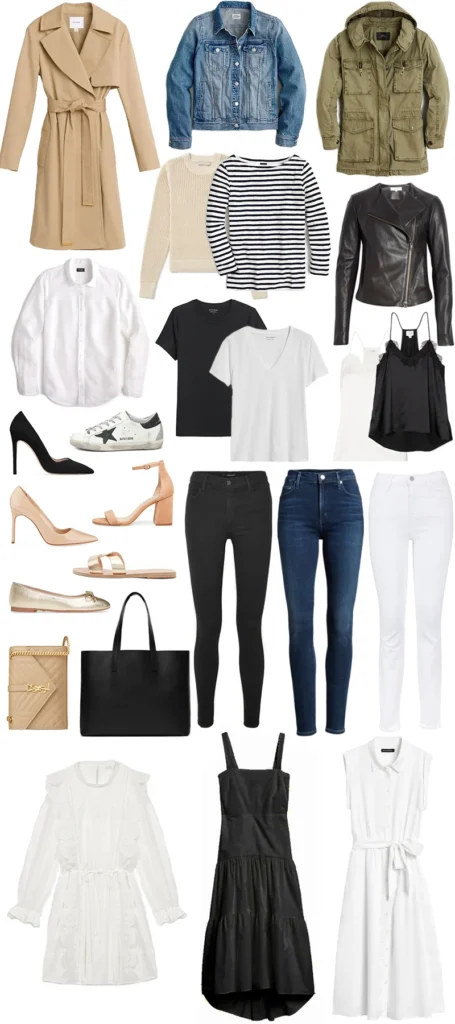The body positivity backlash has undeniably reshaped the landscape of fashion inclusivity and plus-size modeling in recent years. While the body positivity movement once made significant strides toward acceptance and diversity, the rise of weight-loss methods such as Ozempic has sparked a troubling trend of reversion to narrow beauty ideals. This shift has left many curve models disheartened as opportunities diminish and the spotlight on thinner body types re-emerges. Fashion’s moment of progress now appears threatened, creating a dichotomy where the inclusion once celebrated is now overshadowed by a wave of regression. As the industry faces increased scrutiny, it raises essential questions about the future of body representation and inclusivity in a society still grappling with fatphobia.
The recent decline in diversity within the fashion industry calls attention to a troubling phenomenon often referred to as the body image crisis. Following the promising advancements in plus-size representation, a surge of weight-loss treatments has ignited conversations around model inclusivity and the implications of societal norms. As various brands reassess their commitments to the principles of fashion inclusivity, the focus has shifted back to a more traditional image of thinness. This emerging situation has resulted in heightened tension among advocates and models alike, revealing a stark contrast between the aspirations of the body positivity movement and the realities being faced on the runways. Whether termed as a body image crisis or simply a backlash, the repercussions of this trend affect both the models and the broader community advocating for size diversity.
The Return of the Thin Ideal in Fashion
The fashion industry has recently witnessed a concerning resurgence of the thin ideal, a stark contrast to the body positivity movement that once gained considerable traction. Previously, plus-size modeling and the representation of diverse body types were stepping stones towards fashion inclusivity that many had hoped would signal lasting change. However, the rise of weight-loss drugs like Ozempic has seemingly undermined this progress, reinforcing societal preferences for thinner models and highlighting deep-seated fatphobia in the industry. Many models, including those who proudly represented larger body types, now find themselves caught in a cycle of trying to meet these rejuvenated, restrictive beauty standards.
As Skye Standley and Tess Holliday reveal, this regression is not only felt by individual models but reflects a broader cultural shift. Designers appear to be backpedaling on size inclusivity, with fewer curve models being cast in major fashion weeks compared to previous years. This situation resonates with consumers who began to see a reflection of their bodies in fashion, only to witness that representation diminish sharply. The nostalgia for 90s fashion trends, associated with a thinner aesthetic, adds to the complexity of this backlash, raising questions about the future of diversity in an industry that thrives on cyclical trends.
Body Positivity Backlash: Model Perspectives
For many plus-size models, the body positivity backlash manifests in reduced job opportunities and growing anxiety surrounding their careers. Felicity Hayward points out a stark decrease in curve models appearing on runways, with many designers opting for fewer inclusively-sized representations. The fear among these models is that the fashion industry’s embrace of diversity was merely performative, lacking the depth and commitment to real change. This sentiment is echoed by Nyome Nicholas-Williams, who has experienced a notable downturn in her bookings, changing from a highlighted star to a model struggling to secure consistent work. Such experiences underscore the fragility of the gains made over recent years.
The increases in body shaming and criticism faced by plus-size models is alarming. With online abuse returning to pre-2016 levels, as noted by Hayward, it becomes evident that the narrative around body shapes and sizes has not improved as hoped. The challenges models now face extend beyond job availability; they also confront a society that is quick to revert to harmful stereotypes and negative attitudes towards larger bodies. This backlash makes it imperative for the body positivity movement to reevaluate its strategies and reaffirm its commitment to inclusive representation, backing models in their fight for visibility and acceptance.
The Ozempic Impact on Body Image Dynamics
Ozempic and similar weight-loss drugs have ushered in a new paradigm within the body image discourse, particularly in relation to the plus-size modeling community. The allure of rapid weight loss has led many, including aspiring models, to feel pressured to conform to a slimmer ideal. This trend presents a paradox as it collides with the intentions of the body positivity movement, which seeks to celebrate all body types, including those considered plus-size. As models like Felicity Hayward illustrate, the industry is seeing a troubling shift where plus-size talent is urged to become mid-size, redefining what it means to be represented in the fashion landscape.
The ramifications of this shift are profound, as emerging models navigate a landscape where their worth is gauged against a narrow standard of beauty. The conversation around health and wellness, often intertwined with weight perspectives, further complicates the landscape. Models who experience changes in their own bodies due to societal expectations or personal choices face a dual challenge: to maintain their authenticity, while also adapting to an environment that increasingly values traditional beauty norms. This demonstrates a need for a broader, more nuanced understanding of body image, one that transcends societal pressures and consolidates a genuine acceptance of diverse body shapes.
Fashion Inclusivity: A Fading Promise?
In recent years, the promise of fashion inclusivity appeared to be on the brink of fulfillment. However, as recent data indicates, the reality is quite different, showcasing a significant reduction in the usage of plus-size models across notable fashion shows. This prompts concern over whether the industry has genuinely committed to meaningful inclusivity or has simply capitalized on the diverse representation for marketing purposes. By leveraging larger models for visibility without a sustained effort to incorporate them regularly, the industry’s actions reflect a concerning trend of performative inclusivity, raising questions about its longevity and authenticity.
Designers must recognize the value of the plus-size community as integral participants rather than short-lived trends. As seen in reports from industry analysts, the stark decrease in curve model representation demonstrates a troubling regression from prior commitments to inclusivity. It suggests the need for ongoing monitoring and accountability within the fashion industry, ensuring that diversity efforts do not evaporate without substantial support. True inclusivity requires active engagement from all stakeholders, fostering a culture where every body type is celebrated and catered to, thus moving beyond the cyclical embrace of different body standards.
Emotional Impact of Fashion Trends on Models
The fluctuating dynamics of fashion trends significantly impact the emotional well-being of models, particularly those within the plus-size community. As the body positivity movement surged, many models felt empowered, experiencing a sense of belonging and acceptance. However, with the resurgence of preference towards thinner models, this confidence faces a serious threat. The mental health ramifications can be profound, as many models articulate feelings of rejection and confusion. They grapple with the reality that their bodies, which once brought them success and recognition, may now lead to disadvantageous treatment within their field.
Moreover, the pressure to conform to an ideal that is antithetical to their experiences can be a heavy burden to bear. For models like Skye Standley, any regression in the visibility of plus-size representation not only affects career prospects but can also evoke feelings of inadequacy and self-doubt. Yet, amidst this struggle, there remains a resilient community that continues to advocate for change, emphasizing embodying body positivity as essential for future generations. Their collective voices highlight the importance of maintaining inclusive practices within the fashion industry to safeguard and uplift all model experiences.
Navigating the Changing Landscape of Size Representation
Models within the plus-size community have undergone significant challenges as they navigate the increasingly complex landscape of size representation in fashion. Reports indicating a drastic decline in the presence of curve models prompt concerns about the sustainability of inclusive practices. Many in the industry worry that a temporary trend has turned into a systematic erasure of diverse body types, which can thwart the hard-won advances of the body positivity movement. Standing up against these transformations requires models and advocates to recognize their power and influence in shaping industry standards.
As they work toward maintaining momentum behind body positivity, it’s essential for models to resonate with consumers, reminding them of the need for authenticity in representation. The emergence of social media as a platform for activism enables models to engage directly with their audience, promoting dialogue around size inclusivity and its importance both personally and collectively. By galvanizing support and fostering change, the hope remains that true visibility will not be a fleeting ideal but a lasting commitment, encouraging brands to embrace all body types and reshape industry standards for generations to come.
Future of Body Positivity in Fashion
The future of the body positivity movement within the fashion industry hinges on the continued advocacy for authentic representation. As models and activists voice their discontent with the current state of inclusivity, there lies an opportunity to reshape the narrative ahead. For the momentum to maintain its viability, it is imperative that brands build lasting relationships with diverse body types instead of resorting to one-off inclusivity gimmicks during trends. This necessitates a comprehensive understanding of the real needs of the consumer, who seeks to see themselves reflected on runways and in campaigns without the fear of erasure.
Furthermore, the success of this movement relies heavily on collaboration between models, designers, and consumers; a united front can foster change that holds the fashion industry accountable for its choices. The emerging generation of models and consumers are demanding a landscape where diversity is not only accepted but celebrated. By prioritizing body positivity and challenging outdated norms, the fashion industry can pave the way for a vibrant, inclusive future that insists on representation across all sizes, ensuring that the lessons learned during the past decade leave a lasting impact.
Activism and Advocacy for Plus-Size Representation
Activism remains a cornerstone of the body positivity movement, directly impacting how plus-size representation is viewed and valued in the fashion industry. Models like Emma Matell work diligently to advocate for curve and plus-size models, not only in casting but also in how designers create collections. Such advocacy is crucial as it brings visibility to those who have been notoriously sidelined in the industry, shedding light on the disintegrating presence of plus-size models on runways. Activists are calling for a re-examination of the systematic barriers that have historically marginalized diverse body types.
Moreover, the role of social media in amplifying these voices cannot be overstated. Platforms have given models the ability to share their experiences, challenge fast-fashion norms, and open dialogues around inclusivity. While setbacks like the recent focus on thinness may temporarily shadow their efforts, continued activism is essential in ensuring that reliance on body diversity remains insisted upon by consumers and advocated for by models. Together, they can create a ripple effect that compels brands to prioritize equitable representation, fundamentally transforming the fashion landscape for all body types.
The Power of Community in the Body Positivity Movement
The sense of community has emerged as one of the most potent forces within the body positivity movement. Models and activists fighting for size inclusivity often form networks that provide mutual support and encouragement, reinforcing the idea that no one is alone in their struggle against harmful industry practices. This communal strength empowers individuals to speak out against the lack of representation and demand meaningful change from fashion houses. Events and initiatives that focus on body positivity help to solidify these connections, offering a platform for those with lived experiences to share their stories and uplift one another.
Furthermore, community-driven initiatives act as a counterbalance to the disheartening trends currently witnessed in the industry. Supportive environments foster resilience and inspire collective action aimed at advocating for increased inclusivity and acceptance. As models advocate for the diverse bodies they represent, their shared mission bolsters motivation while reminding them of the powerful impact they can genuflect on the future. Together, they ensure that body positivity is more than an industry trend; it becomes a lasting movement that resonates deeply with generations. By continuing to cultivate this sense of community, the path toward size inclusivity can be clearer and more uplifting for all.
Frequently Asked Questions
What is causing the body positivity backlash in the fashion industry?
The body positivity backlash in the fashion industry is primarily driven by the resurgence of weight-loss drugs like Ozempic, the idealization of thinness in wellness culture, and a sudden decline in the use of plus-size models. Many fashion brands that initially embraced body positivity and inclusivity are now reverting to traditional thin ideals, leading to concerns about the future of the body positivity movement.
How have plus-size models been affected by the recent body positivity backlash?
Plus-size models are experiencing a significant decline in work opportunities as the fashion industry shifts back to favoring thinner body types. Reports indicate that the number of curve models used during major fashion weeks has drastically decreased, causing frustration and disillusionment among models who were once thriving in an environment that championed body diversity.
What role does Ozempic play in the current body positivity backlash?
Ozempic has become emblematic of the body positivity backlash as it promotes rapid weight loss, enticing many to seek thinner physiques. This trend not only undermines the body positivity movement but has also influenced the fashion industry’s preference for thinner models, leading to fewer opportunities for larger bodies in fashion settings.
How is fashion inclusivity being challenged amid the body positivity backlash?
Fashion inclusivity is being challenged as many designers and brands are reverting to showcasing fewer size-diverse models. The declining representation of plus-size and curve models at fashion shows indicates a troubling shift away from the objectives of the body positivity movement, reflecting ongoing societal pressures to conform to narrow beauty standards.
What have curve models observed about their representation in the fashion industry?
Curve models have observed a visible reduction in their representation, as many brands are opting for mid-size rather than true plus-size models. This regression has left many models feeling discouraged, as the industry seems to prioritize a return to traditional beauty standards rather than continuing to embrace all body types.
Are brands still committed to the body positivity movement despite the backlash?
While some brands seem to have temporarily embraced the body positivity movement, many are now retreating from these commitments. The recent downswing in bookings for plus-size models suggests that many fashion entities may have only superficially participated in the body positivity dialogue, instead returning to a focus on thinner models.
What impact does fatphobia have on the body positivity movement?
Fatphobia remains a significant barrier to the progression of the body positivity movement, exacerbating the challenges faced by plus-size models and individuals. Even as some brands promote inclusivity, the underlying societal biases against larger bodies persist, hindering genuine acceptance and representation in the fashion industry.
How can consumers influence the fashion industry to support body positivity?
Consumers can influence the fashion industry by demanding greater representation and inclusivity of all body types. By supporting brands that align with body positivity values and voicing their expectations for size diversity, consumers can help shift industry standards and encourage brands to remain committed to inclusive practices.
| Key Point | Details |
|---|---|
| Body Positivity Movement | Had made strides in inclusivity within the fashion industry over the past decade. |
| Impact of Ozempic and Weight-Loss Drugs | The rise of drugs like Ozempic has contributed to the resurgence of the thin ideal in fashion. |
| Decline in Plus-Size Representation | Fashion weeks have seen a notable decrease in the use of plus-size models, with significant drops in both runway shows and overall bookings. |
| Fatphobia and Backlash | The backlash against body positivity has led to increased hate and discrimination towards plus-size individuals. |
| Models’ Experiences | Many models have reported losing work, facing pressure to lose weight, and feeling discouraged by the industry’s regression. |
| Fashion Industry Dynamics | The fashion industry is cyclical, with trends swinging back towards traditional ideals of thinness, jeopardizing previous gains in inclusivity. |
| Call for Action | There is an ongoing need for advocates to push for genuine inclusivity and push back against superficial diversity efforts. |
Summary
The body positivity backlash has become increasingly evident as the fashion industry retreats from its previous momentum towards inclusivity. Despite significant advances in representation, the arrival of weight-loss medications like Ozempic has catalyzed a troubling reversion to a thin ideal. This shift has left many models disheartened, reducing opportunities and perpetuating fatphobia, ultimately questioning the sustainability of the progress made. It is vital for advocates within the industry to remain vigilant and ensure that the conversation around body neutrality and inclusivity continues to evolve positively.




